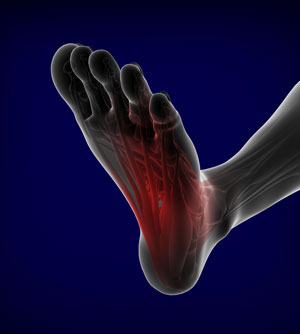
What is a Foot Spasm?
Foot spasms, also known as foot cramps, occur due to the involuntary contraction of the foot muscles. These cramps are usually harmless and will get better on their own; however, sometimes they may need medical attention. Based on the intensity of the spasm, the sensation can vary from a tiny prick to an extremely painful condition.
Causes of Foot Spasms
Causes of Foot spasms include:
- Overly tight shoes
- Dehydration
- Exercising excessively
- Hypokalemia (low potassium levels)
- Nerve damage
- Side-effects of medications
Symptoms
Signs and symptoms of foot spasms include:
- Severe, sharp foot pain
- Involuntary contraction of the muscles
Diagnosis of Foot Spasms
Your doctor can diagnose foot spasms based on a discussion of your symptoms and a physical examination of the foot. If you have frequent foot spasms, your doctor may order a blood test to check potassium and calcium levels. An electromyogram (EMG) may sometimes be ordered to assess muscle and nerve cell health.
Treatment of Foot Spasms
Foot spasms can be alleviated with rest, proper nutrition, and plenty of fluids. You can relieve cramping with light stretching, application of heat, gentle massage, and medication as recommended by your doctor.
Prevention
Foot cramps can be prevented by:
- Exercising within your limits
- Having a diet rich in vital nutrients
- Drinking plenty of fluids to stay hydrated
- Wearing comfortable shoes







